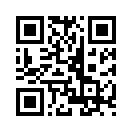
Last Saturday, I saw a young Mom texting or tweeting as she was walking into the grocery store.
This is becoming more and more commonplace according to this recent report from Mediapost:
Tina Sharkey, Chairman and Global President of BabyCenter, says "The smartphone screen is more intimate than any other medium... the majority of moms sleep with their cell phone next to their bed... more than half check their phone first thing in the morning and last thing before they go to sleep... it's her constant companion that makes juggling easier... "
53% of the women surveyed said they purchased a smartphone as a direct result of becoming a mom. The most important features of her phone changed from address book and text messaging to the camera, up 78% to #1, and video camera, which increased by 167% to #2. Apps, which weren't even on her top ten list of important mobile features before she became a mom, increased 67% to #3 on the list. 52% of the moms surveyed have ten or more apps downloaded, with nearly 25% of the apps being for her kids.
68% know how to use most of the features of their smartphone, and 75% troubleshoot their own phone. 33% of moms have used their smartphone for health and wellness in the past month, making a mom 50% more likely to do so than average. Moms are also 40% more likely than average to use their smartphone for social networking. The top three social activities include:
- Reading social newsfeeds (56%)
- Updating her status (54%)
- Reading answers to posted questions (48%)
68% of moms use their smartphone while shopping, 15% more likely to do so than average. 46% claim the most convenient time to receive information about a product is when they are in the store. Also, 62% of moms use shopping apps to research or compare prices.
Mom spends 37% of her daily media time with her smartphone, which is double that spent on TV, and more time than with other media, including radio, magazines, and newspapers. 78% of moms saying they use e-mail on their smartphone to filter incoming communications on a daily basis. Moms are also 284% more likely than the average adult to text their friends rather than call them.
When it comes to mobile ads, coupons, nearby local deals, and bar code scanning round out the top three most appealing features of mobile ads. 46% of moms have taken action after seeing an ad on their smartphone.
| Moms Respond to Mobile Ads | |
| Action Seeing Ad | % of Respondents |
| Any action | · 46% |
| More research later | · 52 |
| Talked to someone else about it | · 51 |
| Clicked to go to mobile site | · 31 |
| Purchased product later in store | · 31 |
| Purchased product later online | · 14 |
| Clicked to call | · 10 |
| Source: BabyCenter, April 2011 | |
62% of moms say the phone is their lifeline to the world beyond your kids. 96% have Facebook downloaded, and more than two-thirds are tapping onto social networking sites at least once a day to many times a day.
Michael Fogarty, Global Publisher of BabyCenter, concludes that "... mobile is mainstream for moms, and is always on... infinite possibilities for today's marketers... "
Based on which products index highest for each stage of parenthood, 21st Century Moms report they are 423% more likely to buy a digital camcorder in the first six months of motherhood than prior, and 153% more likely to buy life insurance in the latter half of the first year of the child's life.
85% of moms say having a baby changed their purchasing habits, and 73% say becoming a mom changed their purchasing criteria. Before having children, women care most about quality, features, and design and after, they shop for safety, quality, and price. 62% of moms report that having a baby changed the brands they purchase.
The study captured the opinions and behaviors of more than 5,000 moms and members of the general population as well as an ethnography study of 23 moms that included over 1,000 text logs, 200 video entries, and 32 hours of in-home interviews.
More information from BabyCenter may be found here.










